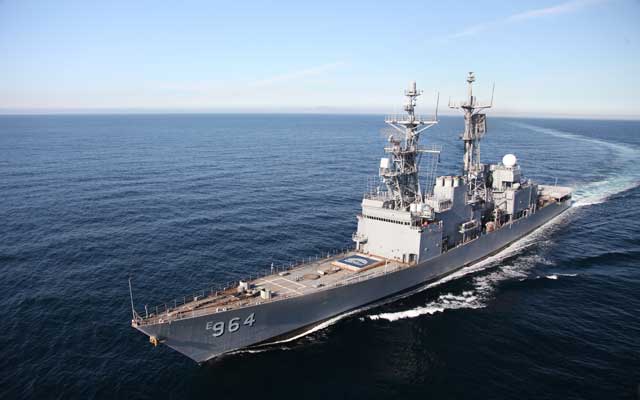Capt. Tom Shanahan didn’t need a full crew. At least, that’s what the Pentagon told him. After all, his ship—the USS Canisteo—was in port for repairs.
As the months passed, the Navy assigned more and more Canisteo crew members elsewhere. By the time repairs were complete, Shanahan didn’t have enough men to take his ship to sea.
In fact, the Navy simply didn’t have enough sailors to go around. It was 1979, and Washington was cashing its Vietnam peace dividend, come what may.
A 30 year-veteran, Shanahan knew that when politicians look for a place to shave expenses, “the military is the easiest thing to cut, especially coming out of a war.” But he also saw the results of that impulse first hand.
When it came time to fill out his readiness report, Shanahan felt honor-bound to report his ship wasn’t ready for service—even though it might get him a black mark among the brass.
But word of Shanahan’s honest assessment spread well beyond the Pentagon—starting what became a firestorm of criticism for the Carter administration over the state of military readiness.
In retrospect, Shanahan remains unapologetic about calling it as he saw it. “It doesn’t make any sense to me,” he argues, “to get the budget under control by [divesting] yourself of national defense.”
And today, he cautions, “We see the same cycle repeating itself.”
Last summer, the aging USS Essex, after suffering a plethora of mechanical and maintenance issues, failed to complete two missions. Its captain got canned.
“I can see in the USS Essex the same types of things that happened to me in Canisteo,” Shanahan says.
“You draw down equipment, you draw down personnel, and therefore, you draw down the readiness of your ship to deploy,” he said.
It is time for Congress to take a hard look the current administration’s disastrous stewardship of the armed forces.
Fiscal sanity and providing for the common defense go hand in hand. Both are essential to keeping the nation safe, free and prosperous.
This week the Senate Armed Services Readiness sub-committee will hear closed-door readiness briefing that every member of the Senate committee has been invited to attend.
This will be followed by a public hearing Thursday on the impact of sequestration, followed by (most likely closed) session with testimony from Pentagon witnesses. If there is one set of briefings and hearings no member of the committee should miss—this week’s is it.
Similarly, members of the House Armed Services Committee are trying to organize a readiness briefing open to all the members of the House for mid-November. Every HASC member should feel a deep obligation to attend that session.
What members will find is that military readiness—and the armed forces’ overall capacity to defend all our vital national interests—is dropping fast. Sequester has accelerated the decline, but it is only part of the problem.
From Day 1, the Obama administration has neglected the imperative to modernize, under-played the forces needed to defend us, and failed to implement any serious reform agenda.
Rather than deliver on its promise to provide more bang for the buck, the White House has done little more than call cuts “efficiencies.”
To get us out of this mess, Congress needs to fight for solutions that will fix defense without raising taxes or ballooning federal spending further.
What they can’t do is ignore the problem of downward readiness trends and declining capabilities.
For members of the Armed Services Committees, participating in the upcoming briefings and hearings is a critical first step. Someone should take attendance.
Originally appeared in the Washington Examiner.
